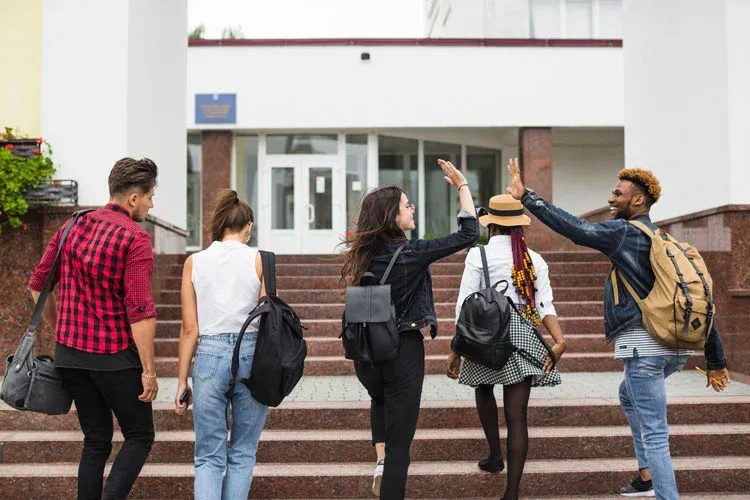
Benefits of Alternative High Schools & Who They’re Right For
Not every student thrives in the traditional high school system. For some, academic challenges, behavioral hurdles, or a lack of support can make it difficult to succeed. For others, the standard structure of classes and rigid schedules simply doesn’t match their pace, interests, or goals. Whether a student is looking for a second chance or a faster track, alternative high schools offer a unique and effective path to educational success.
At Rose Academies, we specialize in helping students who don’t fit the traditional mold — and we’ve seen firsthand how a more flexible, student-centered approach can change lives. Below, we explore the many benefits of our alternative high schools in Tucson and why they may be the right choice for a variety of learners.
1. Personalized Learning
One significant difference between traditional schools and those with an alternative approach is personalized learning. Unlike conventional schools with large class sizes, alternative schools offer smaller student-teacher ratios, allowing educators to create individualized lesson plans based on each student’s strengths, weaknesses, and learning styles. This personalized approach helps students receive the attention and support they need to overcome academic challenges and unlock their full potential.
At Rose Academies, our curriculum is self-paced but never self-taught — students move through material on their own time, with teachers who are always present to lend a helping hand.
2. Flexible Curriculum and Scheduling
Scheduling in high school doesn’t need to be one-size-fits-all. Many students would benefit from having more say in their daily and weekly schedules. Structured class times, lengthy passing periods, and fixed lunch periods may work for some, but they often aren’t the most effective use of a student’s day.
Alternative high schools often offer a more flexible curriculum that caters to diverse needs. These schools can customize programs to include vocational training, life skills development, project-based learning, and independent study. This flexibility allows students to pursue their interests, balance responsibilities outside of school, and move at a pace that’s right for them, whether that means catching up or getting ahead.
3. Supportive Environment
For many students, especially those who are at-risk, a supportive environment is essential to academic success. Alternative high schools prioritize creating a nurturing and inclusive atmosphere where students feel safe, respected, and valued. The dedicated staff works closely with students to provide mentoring, guidance, and emotional support beyond what a traditional school often offers.
By nurturing strong relationships between students and educators, these schools foster a community where students feel empowered to take risks, build confidence, and reconnect with their love of learning.
4. Individualized Counseling and Guidance
Another key benefit of alternative high schools is access to specialized counseling services tailored to students’ unique needs. These may include academic counseling, career guidance, and mental health support. By addressing the personal challenges that impact learning, alternative schools help students develop coping strategies, build resilience, and regain control of their educational journey.
5. Real-World Learning and Life Skills
Beyond the textbooks and lectures, alternative schools place a strong emphasis on real-world experience. Whether it’s through community service, internships, or hands-on vocational training, students have opportunities to apply what they’ve learned in meaningful ways. These experiences not only deepen understanding but also teach critical life skills like communication, collaboration, time management, and problem-solving.
At Rose Academies, we partner with local businesses, colleges, and mentors to give students access to opportunities that enhance their education and prepare them for life after graduation.
6. Fostering Independence and Self-Motivation
The traditional high school model often emphasizes structure and standardized achievement — but it’s not always geared toward fostering independence. Alternative schools give students more autonomy in their learning, encouraging them to take ownership of their education and develop strong internal motivation.
Whether it’s choosing what to work on, how to organize their day, or setting their own learning goals, students gain the tools to become proactive, self-directed learners — a skill that benefits them long after high school.
7. Encouraging Creativity and Critical Thinking
By valuing diverse perspectives and innovative approaches to learning, alternative schools promote creativity and critical thinking. Many offer interdisciplinary studies and project-based challenges that push students to question assumptions, think outside the box, and explore new ideas. This environment fosters curiosity and a passion for learning — qualities that can be overlooked in traditional systems focused on testing and rigid benchmarks.
8. Accelerated Graduation Options
Alternative high schools don’t just help students catch up — they also help them move forward. For gifted students, highly motivated learners, or those with personal goals like starting a business or heading to college early, the ability to accelerate is a major benefit.
With self-paced learning and the ability to focus on essential credits, students at Rose Academies can earn their diploma ahead of schedule, opening the door to future plans without delay.
Conclusion: One School, Many Paths to Success
Alternative high schools are more than just a second chance — they’re an opportunity for students of all backgrounds to thrive in an environment built around their needs, strengths, and goals. Whether you’re looking to overcome past academic struggles, break free from the limitations of traditional schedules, or push ahead toward college and career success, Rose Academies can help you get there.We are proud to offer a personalized, flexible, and supportive educational experience that empowers students to achieve more on their own terms. Contact the Rose Academies today for any questions you may have about the enrollment process.